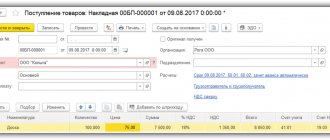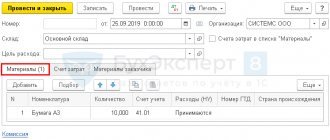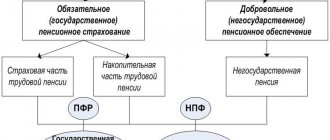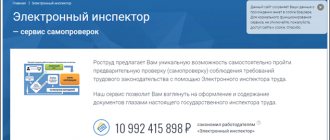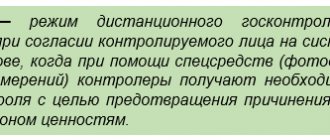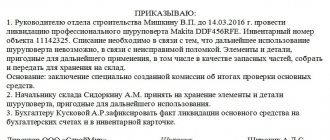The countries of the Eurasian Economic Union have agreed to monitor the movement of certain goods on their territory. For this purpose, the EAEU has created a unified traceability system, consisting of external and internal segments. The external one is intended to ensure the exchange between participants of data on the passage of goods across borders within the Union. The domestic or national segment provides tracking of goods within the territory of a specific state.
The agreement on the implementation of the tracking procedure was signed by the participating countries on May 29, 2022, after which it began to be gradually implemented. Find out what products are subject to tracking and how it works in Russia.
Submit reports online
What is a product traceability system
The product traceability system has been operating in the Russian Federation as an experiment since 2022.
From July 1, 2022, a voluntary experiment becomes an obligation for a certain circle of sellers. Please note that in fact, it is necessary to comply with the requirements for the traceability of goods from 07/08/2021, since the necessary legal regulations were not approved by 07/01/2021.
The rules for traceability of goods are established by Decree of the Government of the Russian Federation dated July 1, 2021 No. 1108.
Traceability of goods is an information record of certain types of goods, which is maintained by suppliers and buyers by assigning and monitoring identification data along the entire path of movement of goods from the first supplier to the final consumer.
The experiment pursued the following goals:
- checking the functionality of the product traceability system in order to assess the possibility of its extension to other goods not currently included in the list of traceable ones;
- standardization of the procedure for recording the turnover of goods;
- confirmation of the authenticity of goods;
- combating the illegal import of goods into the territory of the Russian Federation, including counterfeit goods.
Traceability and product labeling: what's the difference?
Traceability is a system that allows you to track foreign goods imported into the Russian Federation. With its help, the moment of arrival of the shipment in Russia is recorded, its fate within the country is resale until the moment it reaches the final consumer.
Two concepts should be distinguished: labeling and traceability of goods are completely different concepts. Statement of RNPT is not marking. Different types of products are subject to labeling and traceability; in particular, only foreign objects are traceable. Moreover, each individual unit of product is subject to labeling, while the RNPT is assigned to the entire batch. And finally, the marking is physically applied to the object; RNPT appears only in documents.
Who is covered by the product traceability system?
Organizations and individual entrepreneurs must enter data into the traceability information system if they participate in transactions involving the circulation of traceable goods:
- import goods into the territory of the Russian Federation for resale from the territory of a member state of the EAEU;
- sell traceable goods outside the Russian Federation;
- buy and sell traceable goods on the territory of the Russian Federation;
- as of 07/01/2021, they have the right of ownership for the purpose of further resale of goods from the traceable list.
These rules also apply to commission agents and principals (principals and agents).
In any control system there are at least two sides: the one that is controlled and the one that controls.
In this case, the controlling party is the Federal Tax Service, therefore it is also subject to all the rules for implementing traceability of goods.
Why do we need traceability if there is marking?
The goals of traceability and labeling are similar - both systems were introduced to combat counterfeiting, but they are structured differently:
- Labeling tracks each item, while traceability tracks batches.
- When labeling, an identification code is applied to each product; additional equipment is required to work with it. In the traceability system, batch data is indicated only in documents.
- To introduce a labeling system, it is often necessary to rebuild warehouse logistics; for a traceability system, this will not have to be done.
- The traceability system is valid only for imported goods, and marking also applies to Russian goods.
Products that are included in the labeling system are not included in the traceability system.
List of goods subject to traceability
As mentioned, not all items will be traceable. Government Decree No. 1110 dated July 1, 2021 approved the list of traceable goods:
Note! The above goods are traceable not only if they act as actual goods for resale, but also when they are used in economic activities as fixed assets or of low value. Therefore, it is necessary to track, for example, refrigerators purchased for personal needs of personnel. Monitors are also traced. Moreover, regarding monitors, it is important that even with their inclusion in a PC or workstation (inclusion in the kit), traceability cannot be stopped. Read more about this here. This means the following: If you have such items as of 07/08/2021, you must submit a notification of traceable goods remaining and receive an RNPT. See this publication for deadlines. If you buy them after this date, do not forget to indicate the RNPT in registers and VAT returns, invoices if you subsequently sell them, a report on traceable goods if traceability is terminated not by sale, but by another fact of business activity, write-off, for example.
We provided a list of labeled goods in the article “Product Labeling in 2021” .
What details are used to track the goods?
The goods will be tracked using the following details:
Where will RNPT be taken from and who will do it? See how the process of assigning traceability details works in the diagram:
So, RNPT is assigned to traceable goods when imported into the territory of the Russian Federation, when exported to the EAEU countries after July 1, 2022, as well as to goods that will be available from sellers in the Russian Federation after this date.
In what case is a product from the list not subject to traceability:
Once a product is assigned a RNPT, the code will accompany the product throughout the entire chain of movement until it reaches the final consumer - an individual - or is lost. All cases when a product is no longer tracked are listed below:
How is goods tracked along the chain of movement? When selling goods from the list (invoice or UPD), RNPT is included in each shipping document. For all transactions with traceable goods, a report is submitted to the tax office.
Notification of remaining traceable goods
For imported goods already owned by companies as of July 1, 2022, a special procedure for assigning them RNPT applies. To obtain a number for existing traceable goods, the company must conduct an inventory and submit a notification to the tax office about all identified remains of traceable goods.
Companies are required to submit such a notification from the date of entry into force of the list of traceable goods approved by the government, as well as the entry into force of changes to the specified list (paragraph 2 of clause 28 of the Procedure).
Based on the notification received, the tax authorities, no later than the next calendar day, assign the batch of traceable goods to RNPT and report it to the company (clause 29 of the Procedure).
Notification of remaining goods is submitted in electronic form via TCS through the EDI operator. The format and procedure for filling out such a notification will later be approved by the Federal Tax Service of Russia.
What reports do system participants submit?
To monitor goods from the traceability list, new reporting documents were created. So far, the report forms have only recommended forms.
The recommended forms are given in the letter of the Federal Tax Service of Russia dated April 14, 2021 No. EA-4-15/ [email protected] They are valid until September 10, 2021. From September 10, forms approved by order of the Federal Tax Service dated July 8, 2021 No. ED-7-15/ [email protected]
Notification on the movement of goods subject to traceability from the territory of the Russian Federation to the territory of another EAEU member state
To be filled in in case of export of goods from Russia to the EAEU. Data for the report is taken from shipping documents. Delivery time: 5 days from the date of shipment.
The notification contains the following information:
A completed sample notification of the movement of traceable goods is available in the ConsultantPlus system. You can access it for free by signing up for trial access to the system.
Notification of the import of goods subject to traceability from the territory of another EAEU member state to the territory of the Russian Federation
Fill in for goods registered and imported from the territories of the EAEU. The deadline for submitting to the tax office is similar to the previous report - 5 days from the moment the goods are accepted for registration. The tax office responds to this by assigning RNPT.
The notice contains the following information:
Notification of available stock of goods subject to traceability
If at the time of approval of the list of traceable goods the seller has such goods in his possession for further resale, then they must be counted and a notification must be filled out based on the inventory information.
The notice contains the following information:
ConsultantPlus experts prepared a completed notification of remaining traceable goods. Get trial online access to K+ for free and proceed to the sample.
Report on transactions with goods subject to traceability
Those involved in trading traceable goods submit a report quarterly by the 25th day of the month following the reporting quarter.
The notification contains the following information:
A sample of filling out a report on traceable goods is available in ConsultantPlus. Sign up for a free trial of K+ and download a report completed by experts.
How the traceability system for imported goods works in 2022
- During traceability, a product is assigned a RNPT - registration number of the product batch. It is prescribed when importing products into Russia. With the help of RNPT, tax officials will monitor the movement of goods.
How to get RNPT:
- If goods are imported from Armenia, Belarus, Kazakhstan, Kyrgyzstan, importers send an Import Notice (KND 1169008) to the tax office within 5 days from the date of acceptance for registration. Based on it, the tax office forms RNPT for each batch. The document must be submitted within five days from the date of importation. In response, the tax office will send a receipt with the assigned RNPT.
If from other countries, importers generate the registration number of the consignment of goods themselves based on the registration number of the customs declaration and the number of the consignment of goods.
- For remnants of imported goods subject to traceability, you must also obtain RNPT. To do this, you need to send a notice of balances to the tax office (KND 1169011). There is no deadline for submitting this document. It is only important to obtain the RNPT for such a product before any operation, for example, a sale, is carried out with it.
- When selling goods from the traceable list in 2022, electronic documents are exchanged, which indicate the RNPT:
- If you sell to VAT payers, give them invoices,
If VAT evaders - transfer shipping documents
- Every quarter you must submit new reports to the tax office - a document on transactions with goods. This report is submitted by special regime officers and VAT payers when disposing of goods or purchasing traceable goods from VAT evaders.
- Invoices have become mandatory even if the buyer of the traceable item is a VAT non-payer. In this case, the document must be prepared in electronic format.
All documents are transmitted via EDI. Companies, through electronic document management, are required to transmit reports and information about the balance of goods to the Federal Tax Service, and the tax service also transmits information about RNPT in the same way. Participants in the traceability system also exchange primary documents via EDI.
The invoice form has changed. New details have appeared in the document: RNPT code, unit of measurement of the product, its quantity, registration number of the customs declaration (if the traceable product was not produced in a member country of the EAEU), as well as the serial number of the delivery record and details for identifying the document on the shipment of the goods.
Companies that are not VAT payers issue UTD instead of invoices when selling traceable goods. It must also contain traceability details: RNPT, unit of measurement of goods, number of traceable goods.
Related article: Changes in invoices from July 1
How to prepare to work with the system
Traceability is the entry of data into the information base by indicating the RNTP in reports and accompanying documents. That is, you do not need to purchase any additional equipment to participate in the product traceability program.
However, there is one very important BUT. The fact is that all notifications, reports, invoices and UPD, that is, all documents that reflect the RNPT, must be transmitted to the tax office or counterparties only exclusively in electronic form.
If this is not a problem for VAT payers, since VAT returns have been submitted electronically for a long time, then other business entities may be faced with the need to issue an electronic signature and connect to electronic document management and electronic reporting services.
That is, participants in the circulation of traceable goods must, by July 1, 2022:
- conduct an inventory of traceable goods (if any exist on the date of approval of the list of traceable goods);
- issue an electronic signature;
- be able to send reports to the tax office and exchange documents with counterparties electronically.
The answer to the question in which cases it is necessary to submit documents for transactions with goods subject to traceability, at the request of the inspection, is in the ConsultantPlus system. Sign up for a free trial of K+ and proceed to the explanations.
How NSPT works and who it concerns
The batch of goods is assigned a special number, which the participants in the turnover then indicate in all documents when reselling it. There is no need to put an identifier on the items themselves - this is one of the differences from the marking system. Participation in the traceability system is a separate responsibility not related to labeling; the product will not simultaneously participate in both control systems.
All participants in the circulation of traceable goods will report to the tax office on the movement of such goods. VAT payers will indicate information in an updated VAT return, and non-payers will indicate information in a special report.
You become a participant in the system if you perform any of these transactions with a traceable item:
- import;
- the presence as of 07/08/2021 of traceable goods remaining on the right of ownership, which are planned to be transferred in the future on one of the following grounds;
- purchase and sale in the Russian Federation from Russian counterparties;
- transfer of goods to a commission agent by the principal for the purpose of subsequent sale, if the agent acts on his own behalf;
- transfer or receipt of ownership rights free of charge;
- transfer and receipt of goods not related to sale (reorganization, contribution to the authorized capital, etc.);
- termination of traceability of goods (including sales to individuals for personal consumption, self-employed, transfer to production for the manufacture of new goods, disposal, loss and shortage);
- resumption of product traceability (including the return of previously sold goods from individuals and self-employed people, the return of unprocessed residues from production);
- export.
Thus, the obligation to participate in the traceability system may arise even if you are not engaged in foreign economic activity or trade in traceable goods. It is enough to simply purchase such a product for business purposes - and you are already required to report to the tax office. The obligation to participate in the process does not depend on the tax system and form of ownership.
Example.
An individual entrepreneur applying the patent taxation system purchased a Chinese monitor for office work after 07/08/2021 from M-Video LLC. Along with the monitor, the supplier provided the individual entrepreneur with an electronic invoice with the product identifier. The individual entrepreneur must accept the invoice through electronic document management channels, sign it with an electronic signature, and send a report on traceable goods to the tax office.
Without electronic document management, a store will not be able to sell a traceable product to an entrepreneur or company, and an individual entrepreneur or company will not be able to buy it. So any buyer from the business world, willy-nilly, becomes a participant in the system.
Traceability and labeling
Trade turnover control in one form or another is actively developing in the Russian Federation. Along with the traceability of goods, we can recall the labeling of goods. What are the differences between these control systems?
Firstly, we note that it is unacceptable to control the same product using several systems. And if you pay attention to the lists of goods subject to labeling and traceable goods, there will be no overlap in them.
Let's highlight the main differences:
- Labeling requires quite serious preparation from entrepreneurs and additional material costs. For traceability, it is enough to have an electronic signature and access to electronic document management, which many businessmen already have.
- Each unit of goods is marked, each batch of goods is traced.
- The introduction of labeling is gradual; different types of goods begin to be labeled without fail at different times. Traceability begins for all types of goods from July 1, 2021 (the list of traceable goods may change in the future).
- Control over labeled goods is carried out through the “Honest Sign” system, and traceability is monitored by the Federal Tax Service.
We wrote more about labeling in the article “Which products are subject to mandatory labeling from 2021” .
Will there be fines?
At the moment, fines for non-compliance with the order of traceability of goods have not yet been fixed, but are expected. In this regard, changes are being prepared to the Code of Administrative Offenses of the Russian Federation.
Indicative violations and sanctions:
- failure to submit and violation of deadlines for submitting documents on the traceability of goods - a fine of 1,000 rubles for each document not submitted;
- false information or lack of information in invoices or UPD in the part related to traceable goods - a fine of 1,000 rubles for each document.
In any case, the system will be tested in 2022, and fines are unlikely to be approved immediately. Therefore, in 2022 we will get used to the new system. Most likely, fines for violations will become official no earlier than in 2022.
What kind of violations will there be?
The penalties are still mild so that participants can adapt to the system. For example, if you purchased a traceable product, but the invoice does not have its identification number or it is indicated incorrectly, you retain the right to deduct VAT (clause 3 of article 2 of law No. 371-FZ).
The Federal Tax Service website states that liability measures will begin to apply from July 1, 2022. The authorities planned to supplement the Tax Code of the Russian Federation with articles 129.15-129.16 with fines for the absence of RNPT, errors in the number, lack of a report on traceable goods, but have not yet done this.
Currently, tax authorities can only request documents and explanations if they identify discrepancies between traceability system reports and other reports. For failure to provide documents upon such requests or failure to make corrections, standard fines are provided under clause 1 of Art. 126 of the Tax Code of the Russian Federation in the amount of 200 rubles for each document not provided and according to clause 1 of Article 129.1 of the Tax Code of the Russian Federation in the amount of 5,000 rubles.
Check whether you use traceable goods in your business activities. Prepare to implement a tracking system in your accounting and learn how to submit reports. And the “My Business Bureau” system will help you with this. This is a reference and legal system, consultations with lawyers, accountants and personnel officers, services for checking counterparties, assessing the likelihood of blocking a current account, a database of pre-filled forms and online calculators for calculating taxes, fees and payments to personnel.
What changes when filling out an invoice?
From July 1, 2022, in connection with the introduction of goods traceability, there was a need to improve the invoice, as well as its sister document - UPD.
The changes are obvious - goods traceability details have been added to these forms:
- line 5(a) is entered - shipping document (date and number);
- Column 11 has been changed - registration number of the goods declaration or RNPT;
- added columns 12 and 12(a) - quantitative unit of measurement of the product (code and symbol);
- added column 13 - quantity of goods in quantitative units of measurement.
ConsultantPlus experts spoke about how to issue an invoice according to the new rules. Get free trial access to the system and go to the Ready-made solution.
The UPD form has been similarly changed.
Let us add that simplifiers and other VAT non-payers, when participating in the circulation of traceable goods, must use the UTD, and not other primary documents. This is due specifically to the obligation to reflect traceability details. This also applies to those who work under agency or commission agreements.
Issuing invoices according to the new rules
When selling traceable goods, companies that pay VAT will be required to issue invoices to all customers without exception. Even for those who are exempt from calculating and paying VAT and are not taxpayers of this tax (future edition of clause 1, clause 3, article 169 of the Tax Code of the Russian Federation). In particular, individuals purchasing goods for personal use.
In this case, invoices must contain traceability details. To do this, additional information regarding such goods must be indicated in invoices. Such information (details) include:
- registration number of the batch of goods subject to traceability;
- quantitative unit of measurement of a product used for traceability purposes;
- the quantity of a product subject to traceability, in the quantitative unit of measurement of the product used for traceability purposes.
In relation to traceable goods, the country of origin of which is not a member country of the EAEU, two additional details must be indicated in invoices (future edition of clause 5.2 of Article 169 of the Tax Code of the Russian Federation):
- country of origin of the goods;
- registration number of the goods declaration.
As a general rule, when selling goods subject to traceability, invoices will have to be issued in electronic form. This also applies to adjustment invoices.
Paper invoices can be issued only in exceptional cases (future clause 1.1 of Article 169 of the Tax Code of the Russian Federation):
- when selling traceable goods to individuals for personal, family, household and other needs not related to business activities, as well as to self-employed people applying the tax regime “Professional Income Tax”;
- when selling and moving traceable goods from the territory of the Russian Federation in accordance with the customs procedure for export or re-export;
- when selling and moving traceable goods from the territory of the Russian Federation to the territory of another state - a member of the EAEU.
Issuing invoices, including adjustment ones, for transactions with goods subject to traceability, in encrypted form is prohibited.
Results
Traceability will be introduced from July 8, 2022. Goods from a specific list will be tracked by assigning a special number and reflecting this number in the accompanying documents along the entire route of movement of goods along the “seller-buyer” chain until the goods are recognized as untraceable in accordance with the law (for example, when sold to the final consumer - an individual) .
Sources:
- letter of the Federal Tax Service of Russia dated April 14, 2021 No. EA-4-15/ [email protected]
- Decree of the Government of the Russian Federation dated July 1, 2021 No. 1108
- Decree of the Government of the Russian Federation dated July 1, 2021 No. 1110
You can find more complete information on the topic in ConsultantPlus. Free trial access to the system for 2 days.
What products are subject to tracking?
What products should be reflected in the traceability system in 2022? Here is a list of them from Resolution No. 1110:
- Refrigerators, freezers and similar equipment, heat pumps (except air conditioning systems);
- Forklifts and mechanical trolleys;
- Bulldozers, graders, levelers, mechanical shovels, excavators, bucket loaders, compactors and road rollers;
- Washing machines;
- Monitors, projectors, receiving equipment for television communications;
- Integrated circuits and their parts;
- Industrial vehicles without loading devices used for the transport of goods, tractors used on railway station platforms;
- Baby strollers and safety seats.
Many of these groups have their own reservations, in particular, product codes according to OKPD 2 are indicated. To familiarize yourself with them, we recommend that you refer to the text of Government Resolution No. 1110.
